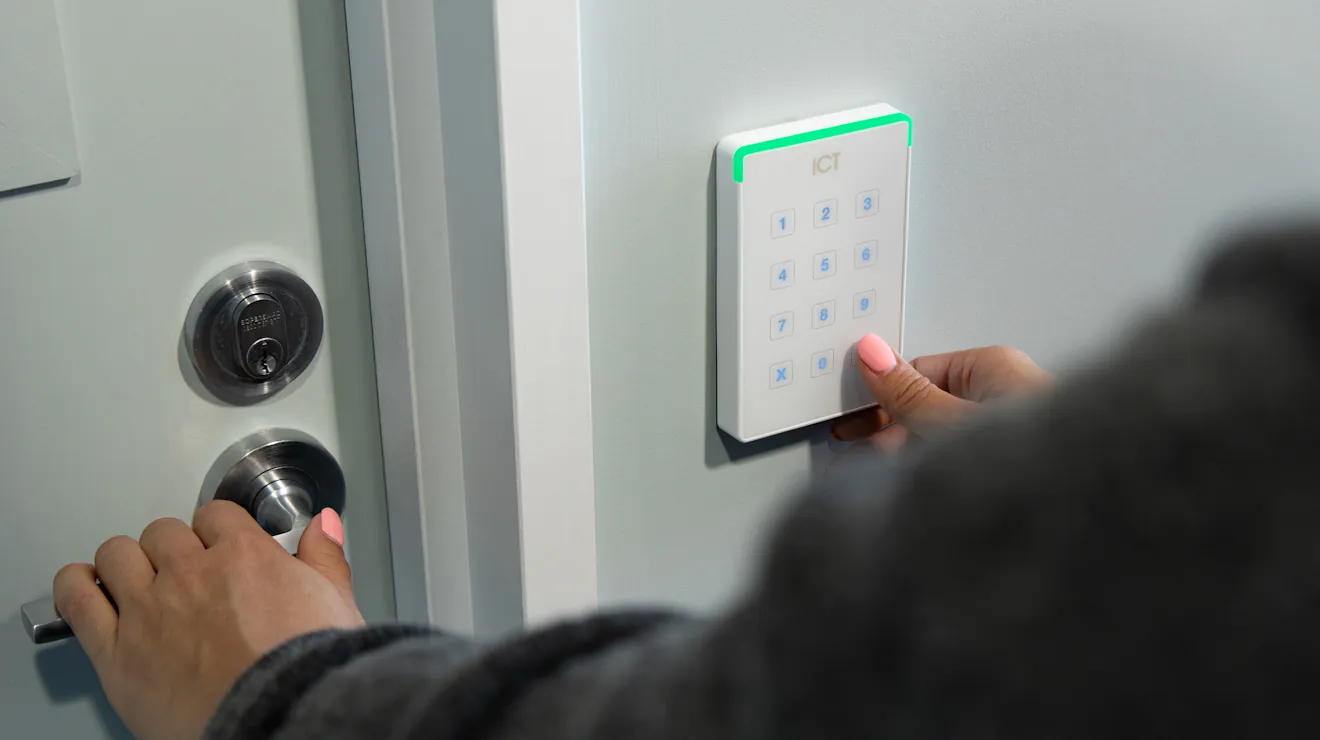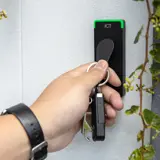The primary purpose of physical access control systems is to manage and restrict entry to buildings or specific areas, ensuring that only authorized individuals have access. This enhances security and protects sensitive environments.

Physical Access Control - What You Need To Know
Key takeaways:
- Physical access control systems are essential for securing physical locations by managing who can enter specific areas, ensuring only authorized individuals gain access.
- Key components of these systems include access points, credentials, readers/scanners, controllers, and servers, each contributing to the overall functionality and security of the system.
- The choice and difference between cloud-based and on-premise physical access control systems involves weighing different benefits and requiring organizations to assess their specific security needs.
Understanding Physical Access Control Systems
Physical access control systems are intricately designed to keep physical spaces secure - think buildings, campuses, or even specific rooms. Unlike logical access control, which focuses on securing digital environments, physical access control pertains specifically to tangible locations like corporate offices or industrial sites. The primary purpose of these systems is to ensure that only authorized individuals have access, whether it's access to an entire building or to a restricted area inside.
Access control systems are essential for organizations, enabling them to identify individuals, verify their identities, and authorize their access levels and actions. These systems go beyond simply granting or denying entry - they ensure that the right people have access to the right places at the right times. At their core, access management systems oversee who enters a location, when they enter, and how they gain access.
By restricting access to specific areas, physical access control systems help maintain a secure environment. Whether it’s a high-security government facility or a private corporate office, these systems play a critical role in safeguarding sensitive areas from potential threats.

Key components of physical access control systems
A well-functioning physical access control system is composed of several key components, each playing a crucial role in the overall security framework. These components include:
- Access Points
- Credentials
- Readers/ Scanners
- Controllers
- Server
Access Points - refers to any location or physical barrier where entry or exit can be controlled and monitored. It's essentially a "gateway" through which people or a vehicle passes, and it's equipped with mechanisms to regulate authorization. For example wireless door locks, perimeter gate access systems, vault doors etc.
Credentials - tools that individuals use to authenticate their identity and obtain access. These can include keycards, fobs, and PIN codes, as well as more advanced options like QR codes, smartphones and biometric systems which can involve facial recognition, fingerprint scanning or iris scanning. Each type of credential offers varying levels of security and convenience, allowing systems to be customized to meet specific requirements and preferences.
Readers/ scanners - devices like readers, keypads, or biometric scanners positioned at entry points to scan credentials presented by individuals and relay the information to the controllers.
Controllers - acts as the central unit responsible for verifying access credentials and managing access points by granting or denying entry to individuals. The controller is essentially the brain of the access control system, making real-time decisions based on the data it receives.
Access Control Server: where records of entries are stored, and user data is managed. This server can be located on-site or in the cloud, depending on the organization’s needs. Centralizing data storage and management ensures consistent enforcement of permissions across all access points
Types of physical access control authentication methods
Physical access control systems utilize a variety of authentication methods to ensure that only authorized individuals can enter restricted areas. These methods include biometric identification, keycards, PIN codes, and mobile access control, each offering unique advantages and disadvantages.
Biometric identification, which involves using unique physical traits like fingerprints or facial recognition, provides a high level of security due to the uniqueness of these traits. While it may require a higher initial investment compared to other access control methods, it eliminates the need for physical cards and the hassle and cost of replacing these cards over time.
On the other hand, keycards and fobs are a more affordable upfront solution and widely utilized, however, they can carry the risk of being lost or stolen, which can compromise security. PIN codes offer a simple yet effective means of authentication, requiring individuals to enter a specific code to gain access. The downside is that PIN codes can be shared or guessed, which would in hand reduce their overall security effectiveness. To mitigate these risks, using unique and complex codes which cannot be easily guessed, purchasing readers with anti-tamper features to alert administrators of potential breaches, and setting lock-out policies to secure the system after a certain number of failed attempts can all help in advancing the security.
Mobile access control has gained popularity thanks to it being inherently more secure against theft and cloning, as well as its flexibility and user-friendly nature. Using smartphones as credentials offers a more seamless and convenient access experience.
Each authentication method has its own set of benefits and drawbacks, making it important for organizations to choose the one that best aligns with their security needs and operational requirements. An effective solution to consider is adopting a multi-factor authentication approach, where multiple layers of verification - such as combining a mobile credential with a PIN code - are used to strengthen security. This layered approach can reduce the risk of unauthorized access.
Importance of Physical Access Control Systems
The importance of physical access control systems cannot be overlooked, particularly in an age where security breaches and insider threats are on the rise. These systems play a critical role in safeguarding sensitive data by preventing unauthorized access that could lead to theft or harm. This is particularly important in environments where the potential for internal breaches is high, such as corporate offices and government facilities, highlighting the importance of secure access control and physical security.
Regularly reviewing access rights is a great way to stay on top of security regulations and make sure only the right people have access to sensitive areas. These systems not only safeguard confidential information but also keep you compliant with industry-specific security standards.
Physical access control systems can provide organizations with an audit trail that documents entries, which is critical for security oversight. This audit trail can be invaluable in the event of a security breach, providing a detailed record of who accessed what areas and when.

Implementing physical access control solutions
Implementing physical access control solutions involves several key steps, including integration, setting permission levels, and providing proper and adequate training.
Transitioning to an enterprise level physical access control system can help centralize management and enhance system scalability and performance. Establishing clear permission levels minimizes unauthorized access to sensitive locations. This step is crucial for ensuring that only authorized individuals can access specific areas within a facility.
Training plays a critical role in implementing physical access control solutions. Even the most advanced system is ineffective if users don’t know how to operate it. Factoring training needs into annual budgets and plans at the start of physical access control projects helps ensure everyone is well-prepared. Involving stakeholders in the training development process ensures it meets the unique operational and security requirements.
Challenges in managing physical access control systems
Managing these systems can be challenging, especially with standalone systems. Standalone systems often face issues, for example having an independent credential management system could cause real-time delays. The lack of a centralized system can also cause frustration by preventing an overview of all operations in one place as well as pose security risks if somebody updates one system and not another. This fragmentation complicates the administration of both cloud and on-premises systems. A practical solution to this challenge is adopting a unified access control system with robust integration capabilities. Centralizing credential management, streamlining administrative tasks, and enabling seamless communication across all facilities can significantly enhance efficiency, eliminate data discrepancies, and provide a comprehensive view of all operations.
Cloud-based vs. on-premise physical access control systems
When choosing a physical access control system, organizations often have to decide between cloud-based and on-premise solutions. Each option has its own set of benefits. On-premise systems provide organizations with complete control over data management and security configurations. They often incur higher initial costs but may be less expensive over time when considering maintenance. They can also provide offline functionality if there is a case of internet outages and removes any dependencies on third party providers.
Cloud-based systems provide the convenience of remote monitoring, allowing users to stay informed about activities while on the go. This flexibility makes them an appealing choice for growing businesses, offering the ability to maintain oversight from any location. While cloud systems do rely on stable internet connectivity, advancements in technology and network infrastructure continue to minimize potential disruptions, ensuring reliable and secure performance0
Both options offer valuable features, enabling organizations to select the solution that best aligns with their specific needs and priorities.
Integrating physical access control with other security systems
Integrating physical access control systems with other security systems can significantly enhance overall security effectiveness, while providing deeper business insights.
When choosing a physical access control solution it’s important to prioritize an open platform system capable of integrating and layering various systems, you could layer your physical access control with HR databases, elevators, building automation and visitor management systems. Having an integrated system builds a more comprehensive security framework, ensuring that all aspects of physical security are covered, for example, combining access control with video surveillance provides visual verification of individuals entering restricted areas.
Best Practices for Optimizing Physical Access Control Security
To optimize the security of physical access control systems, organizations should implement key best practices. Conducting regular audits and system updates is crucial to address emerging security threats and leverage technological advancements. This includes maintaining an up-to-date access control list to ensure that only authorized individuals have access to sensitive areas.
Implementing multi-factor authentication enhances security by requiring multiple forms of verification, making unauthorized access significantly more difficult. This approach layers security by combining something the user knows (like a PIN) with something they have (like a keycard) or are (like a fingerprint).
It’s also about finding the right balance between ease of use with strong security. If a system’s too complicated, it may hinder productivity, while those that are too simple may not provide adequate security. The goal is to strive to implement access control solutions that are both user-friendly and highly secure.

Selecting the right physical access control system
Selecting the right physical access control system requires a thorough assessment of an organization’s physical security needs. This involves identifying sensitive areas and vulnerabilities within the facility. Defining access levels and permissions based on organizational roles helps streamline security management.
Physical access control systems play a critical role in helping organizations comply with industry regulations, particularly in sectors such as healthcare, education and banking and finance. When choosing an integration system, factors like compatibility, security measures, and the need for automation should be considered.
Exploring the right technology, like mobile and biometric options, helps match user needs with the right level of security. Combining physical access control with asset management systems can significantly lower operational costs by managing user privileges and asset access on one platform. This integration creates a smoother experience, letting users unlock doors and access assets with the same credentials.
Access Control 101: The ultimate beginner's guide to physical security
What does access control even mean? And why do you need to know about terms such as intrusion or integrated security? Download our ultimate beginner's guide to find the answers to this and more.
What does a best in class physical access control system look like?
As highlighted throughout this article, it's clear that users value choice and control when it comes to their access control needs. They seek solutions that meet their current needs, while offering the flexibility to adapt as those needs evolve. With a system like ICT’s Protege GX—an open technology platform offering limitless integration possibilities and the scalability to grow alongside the company—users are truly empowered and choice and control is essentially placed in the hands of the user.
Sarah Thompson, Chief Product Officer at ICT explains this as the following -
“A common thread for everyone is that people want a system that is flexible and can be configured to their specific needs. They want choice on the supporting applications that make up the system (like VMS, or visitor management etc.), and they want something that is approachable, intuitive and easy to use…Integrating with additional services drives wider operational benefits for organizations in terms of time and cost savings, and helps provide more data for further business insights”
With ICT, users don’t just gain a highly customizable solution designed to meet specific industry needs, but gives the peace of mind of a robust and reliable solution with cutting-edge technology like DESfire credentials. ICT pioneered the industry over 20 years ago with the ability to unify previously siloed systems—access control, intrusion detection, and building automation—into a single, intuitive platform for seamless usability.
Training and support for physical access control systems
Training staff on physical access control systems is essential for identifying security risks and responding appropriately, boosting the overall system performance.
Specialized training is crucial for all personnel involved, including both technical staff and end users. Training programs should be tailored to specific roles, ensuring that IT architects, engineers, technicians, and operators understand their responsibilities and the technologies involved. Industry certifications and manufacturer-specific training enhance the capabilities of personnel working with the system, ensuring they stay current with evolving technologies.
Ongoing vendor support plays a critical role in the successful operation and maintenance providing necessary updates and assistance as system needs evolve.
Case Studies: Successful Implementation of Physical Access Control Systems
Real-world case studies provide valuable insights into the implementation and effectiveness of physical access control systems in various organizational contexts.
The University of British Columbia (UBC), a global leader in teaching, learning, and research, faced challenges with outdated security systems that were unreliable, vulnerable, and lacked scalability and modern features. By adopting ICT’s Protege GX access control system, UBC implemented a unified security solution integrated with their student management system and elevators. This successful partnership has grown from two initial sites to a multi-year collaboration now covering 115 buildings, over 2,300 doors, and 50,000+ cardholders. With features like lockdowns, smart readers, camera call-ups, and elevator access control, UBC now benefits from a fully unified and modernized system.

Summary
Physical access control systems are essential for keeping locations secure and ensuring only the right people can access certain areas. By getting familiar with their key components, authentication methods, and overall importance, organizations can confidently implement and manage these solutions.
By applying these insights and guidelines, organizations can strengthen their security and reduce potential risks. A safer, more secure facility begins with choosing the right access control solution.
Frequently Asked Questions
What is the primary purpose of physical access control systems?
What are the key components of a physical access control system?
The key components of a physical access control system include access points, credentials, readers/ scanners, controllers, and servers. Each element is essential for verifying identities and managing access effectively.
How do cloud-based physical access control systems differ from on-premise systems?
Cloud-based physical access control systems provide enhanced scalability and remote management, relying on stable internet connectivity, while on-premise systems offer greater data control and security configurations, typically at a higher initial cost.
Why is regular training important for managing physical access control systems?
Regular training is essential for enhancing the effectiveness of physical access control systems, as it enables staff to identify security risks and respond appropriately. Ensuring that both technical staff and end users grasp their responsibilities and the associated technologies is critical for effective system management.
What are some best practices for optimizing physical access control security?
To effectively optimize physical access control security, it is crucial to conduct regular audits and updates, implement multi-factor authentication, and strike a balance between user convenience and stringent security measures. These strategies allow organizations to effectively respond to evolving security threats and maintain restricted access for authorized personnel only.








